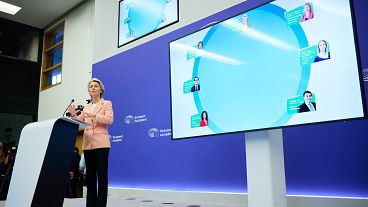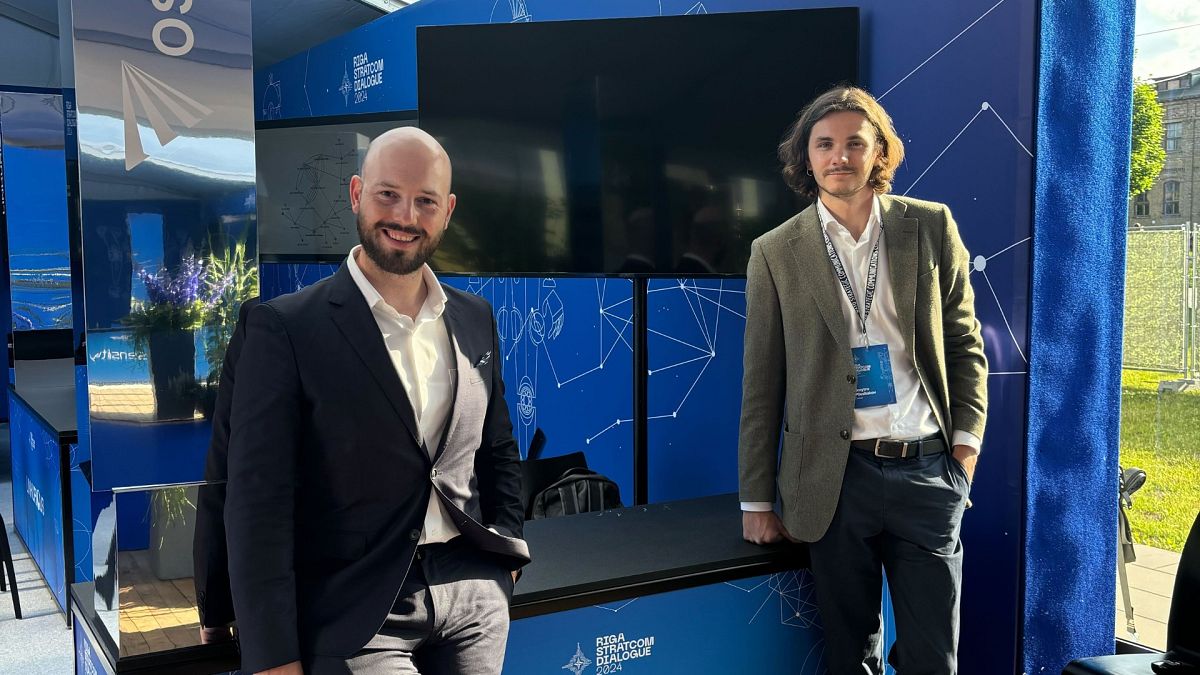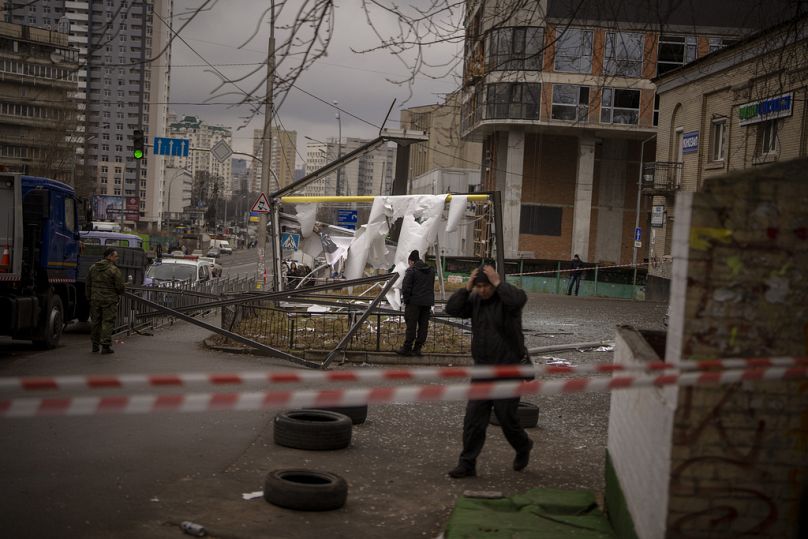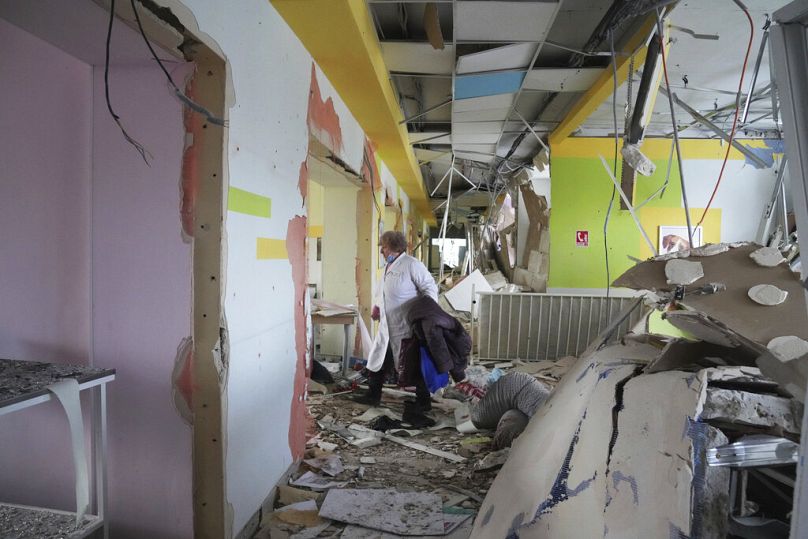Russian disinformation adapts to different audiences, from young people to political groups. Osavul's co-founder explains how to recognise these tactics.
It is the largest investment in a company exposing disinformation in Europe. The Ukrainian company Osavul has received 3 million dollars (2.78 million euros).
In its latest press release, the company introduces its three European investors: 42CAP, a German venture capital firm, u.ventures, a US-government-backed fund, co-financing Ukrainian and Moldovan projects, and the SMRK Venture Capital Fund, which already assisted with fundraising last year.
Osavul's co-founder, Dmytro Bilash, never intended to work in security. He comes from the business world. He analysed data from companies to create advertising. In 2022, everything changed. Russia launched its full-scale invasion on Ukraine.
Bilash's flat in Kyiv was destroyed by two Russian missiles. He felt compelled to act and wanted to help. A request for support from the Ukrainian government led to the launch of Osavul —a media intelligence organisation that uses artificial intelligence (AI) to expose and combat disinformation.
What began as a small project in 2022 and was later funded through crowdfunding and donations is now involved in EU-funded and NATO projects and attracts millions in funding. Osavul’s headquarters is now in Delaware in the US, where 28 specialists worldwide work for them. Over 500 analysts use Osavul’s data.
Dmytro Bilash, co-founder of Osavul, speaks to Euronews about Russian disinformation. He explains why it has gained such traction in Germany, and offers tips on how fake news can be debunked.
Euronews: Why did you start Osavul?
Dmytro Bilash:** We wanted to help. The full-scale invasion has changed the lives of all Ukrainians. We offered our expertise as analysts, and eventually we were approached by people from the government.
The problem of disinformation is so massive, no private company — neither from Europe nor from the USA — could deal with this mass of mis- and disinformation.
The scale was much smaller before the full-scale invasion. We tried to develop something that could deal with this modern, new threat of disinformation.
I had previously worked in advertising, which wasn’t meaningful. I wanted to do something that had meaning, something that was necessary.
Euronews: How did you go from advertising to analysing disinformation?
Bilash: Yes, that was the problem. There was no ideal solution. We knew how to analyse data, publicly available data, and we used that knowledge to develop something. It's now a pretty sophisticated technology.
Euronews: How do you work now? How does an analysis like that work?
Bilash: There are a few steps to consider. We collect data from websites, from open sources, for example more than 10 million messages a day.
Our AI analyses this data to identify key narratives, topics discussed, and opinions expressed by media, businesses, political organisations, or opinion leaders.
For example, if Russia launches a campaign in a European country to interfere with elections or create discord across Europe using economic issues, we can detect it and highlight the specific narratives used in these attacks.
We use three types of tools for this: Open source tools, commercial tools that are purchased and our own tools.
Once the AI model has filtered out the main ideas and the fake news, we need to understand who is spreading this misinformation. Is it a public institution, propaganda channel, or website? What impact does this have? Does the false news stay in one channel, or does it spread further, creating a larger echo chamber?
We collect all this information and make it available to decision-makers. What we ultimately do: we want to provide the decision-makers, the legislators, security institutions with the information so that they can ultimately take action. If laws are being broken, they can take action against it.
Euronews: Can you name an example of what the main narratives of Russian disinformation are?
Bilash: It is important to understand that disinformation patterns depend very much on the culture and the places where they are spread. The patterns are adapted.
They, therefore, depend on the group that is to be addressed: Young people, right or left-wing-leaning people, Russian-speaking or German-speaking?
One of the main narratives of Russian disinformation is that the German economy is weakening.
An example: A furniture company goes bankrupt, it doesn't matter whether it exists or not, it just has to seem real.
In Germany, real news is often placed in false contexts in order to show that the German economy or the state, is weakening. Ultimately, Russia's aim with its disinformation in Germany is to weaken support for Ukraine.
Euronews: Why is Germany a big target for Russian disinformation campaigns?
Bilash: I see several reasons for this. First, Germany is an important country. It is the largest economy in Europe - that is the obvious reason. The large Russian-speaking community in Germany makes it easier for Russia, but it is not absolutely necessary.
Another reason is that Telegram, as a messaging service, is much more widespread in Germany than in other Western European countries.
A lot of disinformation is spread via X, TikTok and Telegram — these media seem less strongly controlled than platforms by Meta, such as Facebook, Instagram or WhatsApp.
In addition, Russia can utilise structures that were established before the war due to the strong connection between Russia and Germany. The more freedom of expression is valued in culture, the more breeding ground there is for disinformation.
Euronews: How can "normal" people recognise disinformation?
Bilash: When I see something on social media, I try to track my feelings: If a post, a video triggers a very strong feeling in me, then I become vigilant and ask myself: why? So the first warning signal with fake news is that strong feelings are being triggered. The second is: the sender, the source.
Where did I get the information from? From a friend I trust or is the information from a random X account that usually posts cat and dog videos and suddenly shares a strong political opinion. Sometimes something like that is enough to understand that something is not fully trustworthy.
And of course, disinformation increases the value of good journalism, making it easy to debunk and verify disinformation.
Euronews: Are there Russian disinformation narratives that are more explicitly disseminated in Ukraine?
Bilash: In Ukraine itself, the situation is somewhat different from Europe or the rest of the world. Ukrainians have generally become much more vigilant.
The strategies here are often very closely linked to military events. This means that Russia makes ‘conquests’ and military victories much bigger than they are, it hypes them up.
For example, if a village near the frontline has been brought under Russian control, it may no longer exist or there may no longer be any people living there, Russian propaganda celebrates it as a great victory for the Russian army. The aim of such campaigns is to disrupt the Ukrainians' sense of unity - both inside and outside Ukraine. To weaken and destabilise mutual support among them.
Euronews: Is there a common strategy that Russia uses for its disinformation campaigns?
Bilash: When Russian propaganda talks about a nuclear threat, it is a sign - either for the domestic population or the international community. Remember the bombing of the maternity clinic in Mariupol? Something we call "information alibi" was used there.
Even before the attack, information was spread that there was a Ukrainian battalion in the hospital.
When the attack took place, the disinformation campaign was easier to spread, because the false information about the battalion in the hospital was already out there, the supposed reason for the attack had already been established.
Spreading the truth is easy: something happened, you report it. If you're trying to spread a certain fake narrative, you have to stick to it, you have to prepare it. It's like a machine into which resources are channelled to spread these false narratives.














